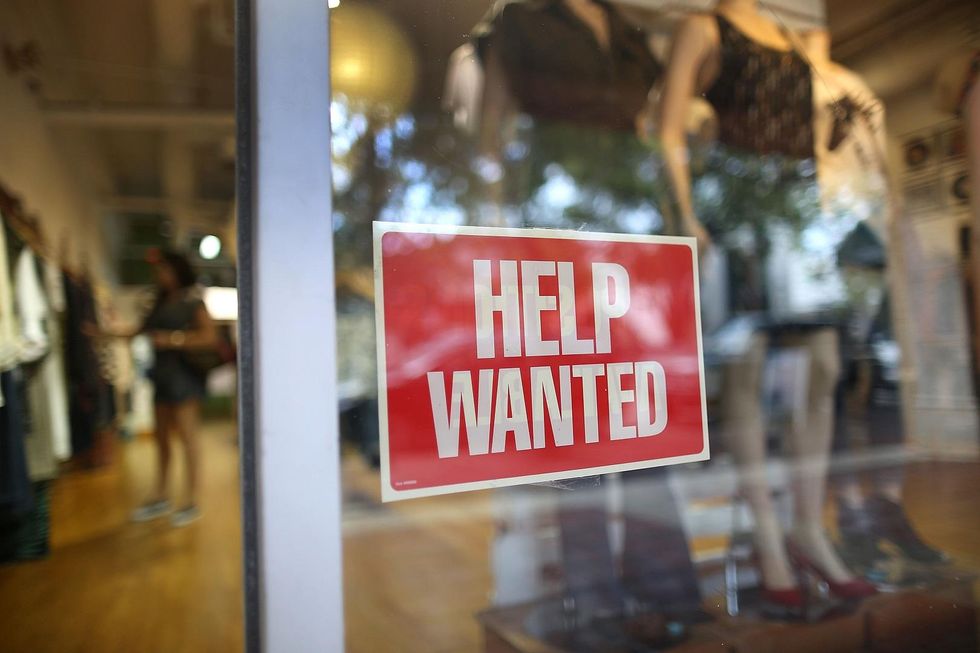
A help wanted sign is seen in the window of the Unika store on September 4, 2015 in Miami, Florida. (Photo by Joe Raedle/Getty Images)

It was another good month for American workers. The jobs report released Friday showed the best jobs numbers of any report since July 2016. Meanwhile, unemployment kept steady at 4.1 percent, the lowest the rate has been for 17 years, and black unemployment dropped to 6.9 percent.
February was the 89th consecutive month of job gains for the United States — that’s the longest run the Labor Department has ever recorded.
The Bureau of Labor Statistics report stated, “Total nonfarm payroll employment increased by 313,000 in February, and the unemployment rate was unchanged at 4.1 percent. Employment rose in construction, retail trade, professional and business services, manufacturing, financial activities, and mining.”
This was significantly better than most experts had anticipated. Economists had expected the economy to add only around 200,000 new jobs, according to the New York Times.
Responding to the report, the Dow Jones jumped 150 points when markets opened this morning, then climbed another 100 points. CNBC called it “the perfect jobs report for the stock market” and described the economy as “a perfect case for stocks.” Diane Swonk, chief economist at Grant Thornton, predicted that the report “sets the stage for wage increases.”
Jeremy Klein from FBN Securities applauded the report: “The bulls could not have conjured up a better scenario for the February jobs report than what the government actually printed."
This latest report does not indicate whether or not the jobs market has reacted at all to President Donald Trump’s newly proposed and signed global tariffs on steel and aluminum imports, since it only covers the month of February. Trump’s first tariff announcement took place on March 1, and he signed them on March 8. The tariffs are scheduled to go into effect within the next 14 days.
However, the jobs report also lists employment numbers by sector, so the next few reports could provide information on how the tariffs will specifically affect both American-based steel and aluminum manufacturing businesses, and sectors like auto manufacturing where industry leaders voiced concerns about how the tariffs would impact their costs.
The BLS report usually comes out on the first Friday of the month, but this past February fit a very specific set of guidelines that postponed the data’s release for a week.